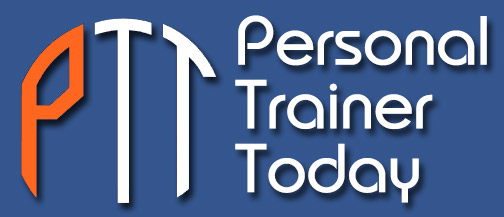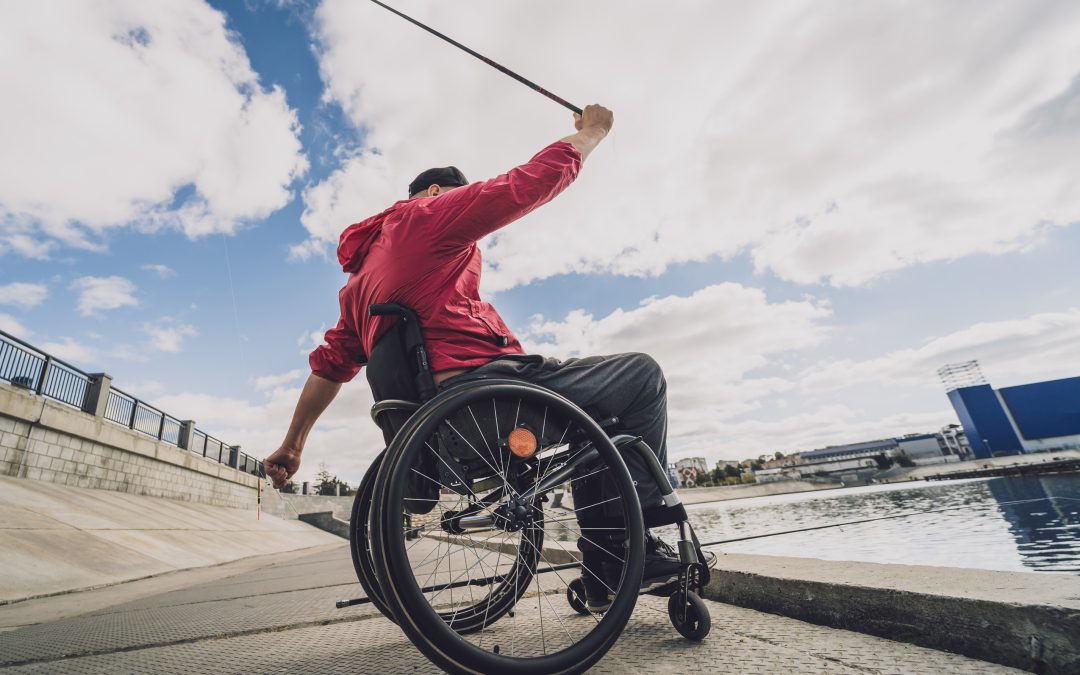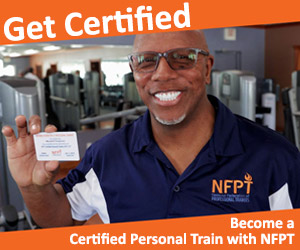Creating an effective exercise routine for any client who falls into the category of “special populations” requires an in-depth understanding of the unique challenges and needs of each group. Clients living with any physical/developmental challenge have twice the incidence of sedentary lifestyles as compared to their more able-bodied cohorts. Read on to learn how personal trainers can adapt not only program designs/equipment use but also their language/listening/interpersonal communicative skills, to foster a strong partnership with individuals of all ability levels.
Adopting a Positive Perspective
Training special populations currently ranks as one of the fastest growing segments of the personal training industry. A special population refers to particular groups of people with special fitness/exercise needs, often requiring a greater level of supervision. This may include those living with heart disease, diabetes and other prevalent diseases, as well as those who currently find themselves in a variety of life situations: injuries, pregnancy, postpartum, ageing, etc. The term “special populations” does not limit itself to individuals born with physical, emotional or developmental challenges.
Individuals from special populations often face unique hurdles in their fitness journey, making a personal trainer’s motivation/encouragement vital. Evidence repeatedly points to a strong relationship between engaging in physical activity and positive health outcomes for these adults.
Among special-needs individuals, a moderate amount of evidence exists to suggest a positive correlation between physical activity and the following health outcomes:
- exercising and resting heart rate
- hypertrophy
- speed
- activities of daily living
- mobility
- physical activity participation
- blood pressure
- cholesterol levels
- immune function
- bone health
- mental wellbeing
Armed with this knowledge, we can proceed to the specifics of the initial client assessment.
First Steps in Establishing Rapport
Prior to engaging in any exercise protocol, personal trainers must assess an individual’s health status and abilities. Include a thorough health history, consulting with the client’s entire healthcare team; when necessary, secure a clearance from his physician prior to designing an exercise program.
Adaptive fitness refers to the modification of a physical activity regimen. Adjusting exercises to meet the unique needs of any individual, with an ultimate goal of creating opportunities.
Successfully creating an exercise program for clients with any special need requires knowing exactly what goals they strive to achieve. Rather than regaling them with the myriad different exercises they can try, a process that often comes across as overwhelming, allow the client to speak tell you…and then truly listen.
Designing an adaptive fitness program requires strict adherence to safety protocols, not only for the client but for others in the gym as well. Along with this consideration, trainers need open-mindedness and acceptance around the client’s performance
Upon completing this phase, the trainer can set about designing workouts. In adaptive fitness training, success relies upon a trainer’s readiness to modify exercises according to individual needs/abilities. Participants belonging to special populations might require unique variations/modifications to traditional exercises, in order to safely accommodate any physical limitations or health conditions. Implementing these adaptations helps ensure that every participant can benefit from the workout, regardless of his unique circumstance.
As with the general population, adults in any special population should receive assistance achieving the following guidelines:
- 150 minutes or more (for example, 30 minutes 5 days a week) of moderate-intensity aerobic physical activity a week
- 2-3 days/week of muscle- strengthening activitiest hat include all major muscle groups
Adaptations in the Fitness Center
Vigilant surveillance of special-needs clients during their workout sessions goes a long way towards ensuring their safety and overall well-being. Seasoned trainers can perceive signs of discomfort, fatigue, or struggle brought on by physical/developmental limitations. If a trainer witnesses these signs, he can quickly and creatively provide alternatives to the workout.
In a general sense, programs for these special populations include flexibility, balance, strength, and endurance, much like one would design for any other client. Many gyms today offer specialized fitness equipment; depending upon a client’s abilities and fitness level, trainers may choose to employ resistance bands, stability balls, and adjustable weights. Similarly, seated machines or adaptive bikes work well for those requiring additional support. As always, remember that the goal of the trainer centers around ensuring inclusivity for all exercise experiences.
Certification Specialties
While any trainer who spends sufficient time learning about the specifics of a client’s unique needs can provide a quality program, some trainers choose to go a step further and earn specialized certifications in adaptive training. Such individuals delve deeper into the skills required to recognize unique challenges and tailor programs accordingly.
A competent inclusive fitness trainer should possess ample practical experience training clients with a variety of physical disabilities, cognitive impairments, or chronic health conditions, while also fostering a supportive, non-judgmental atmosphere.
Organizations like the American College of Sports Medicine (ACSM), National Academy of Sports Medicine(NASM), or the Inclusive Fitness Coalition offer certifications that demonstrate a trainer’s expertise in working with diverse populations. In addition to obtaining this higher level of education, collaborating with physical/occupational therapists helps ensure safe and effective workouts that accommodate each individual’s exercise limitations.
Qualities to Seek in an Adaptive Exercise Professional
A large part of offering inclusive fitness training involves possessing effective communication skills. While this remains a key aspect in dealing with the public in any regard, this skill takes on greater importance when working with specialized populations. A qualified trainer offers patience, understanding, and the ability to convey information/directions clearly, always with the goal of creating a positive, empowering atmosphere.
People with disabilities deserve the same amount of dignity and respect that we would show to any other human being. With that in mind, when training individuals with disabilities, we must focus on their abilities, not their disabilities. These clients may say/do things in manners different to those without special needs; however, they can achieve the same outcomes and success and deserve to feel empowered like we all do.
Rules of Etiquette When Working with Special Populations
Individuals living with any physical/developmental/social challenges have many of the same concerns as the rest of the population, and therefore deserve the same consideration and respect. Below we outline some key factors to keep in mind when training such clients ~
1. Think before speaking
Avoid using labels when speaking; instead, opt for “people first” language that empowers rather than marginalizes people with disabilities. Consider the following chart:
Potentially Hurtful Labels ~ Preferrable Word Choices ~
Birth defect Person born with a congenital disability
Cripple One who requires mobility assistance
Deaf/Dumb One who cannot hear/verbally communicate
Emotionally disturbed Individual with an emotional challenge
Hunchbacked Client with curvature of the spine
Insane/Deviant Client with a mental illness
Mongoloid Person born with Down’s Syndrome
Retarded Client with a cognitive challenge
Wheelchair-Bound One who uses a wheelchair
- Avoid displaying pity
Individuals living with challenges of any kind do not like when others refer to them as “victims”. Personal trainers can make a concerted effort not to talk down to these clients.
3. Personal Interactions
When interacting with challenged individuals, speak directly to them, not to their aides or interpreters.
- When communicating with someone who is deaf/hard of hearing, remember that some have mastered the art of reading lips, while others prefer to use sign language/assistive technology. Inquire as to their preferred mode of communication.
- For blind or visually impaired clients, introduce yourself and allow time for them to get accustomed to the sound of your voice. Offer your arm or elbow as a guide if they request assistance, but refrain from pulling/grabbing the individual.
- When training clients who use a wheelchair, do not push, lean on, or hold the wheelchair. Place yourself at the client’s eye level when speaking.
- Individuals with cognitive disabilities or speech impairments appreciate when others speak to them in clear, simple sentences. Prepare to give them sufficient time to communicate with you. A respectful attitude means not trying to finish their sentences.
Working With Clients in Various Life Stages
Many clients come to the gym seeking guidance for conditions other than those mentioned above. These individuals may find themselves in unique health situations – pregnancy, rehabbing an injury, frailty associated with advancing age, obesity, or living with potentially dangerous yet still quite manageable illnesses. Such clients may still warrant special considerations when designing effective workouts; thus, “adaptive fitness” comes into play here as well.
1. Pregnancy and postpartum
When training a woman in any stage of pregnancy, exercise professionals must decide which exercises she can safely perform as well as those she should avoid. As she progresses toward delivery and the post-partum period, trainers can prepare to modify exercises, stretches and rest intervals on an individual basis.
2. Youth
In the weight room, trainers need to consider children as a special population. At what age can young people safely engage in serious strength-training? What precautions do professionals need to follow in order to ensure a child’s safety and proper development? While young people often participate in recreational/club/elite sports, the trainer’s job comes in knowing how far he can push an adolescent athlete, as well as when young bodies need appropriate rest. Age-appropriate training adaptations will help them remain injury- free and well prepared for competition.
3. Seniors Adults
At approximately 75 million individuals, the over-60 demographic might just represent this country’s largest special population. Data reveals that many of today’s seniors have the financial ability and willingness to invest in remaining physically fit, striving to maximize their health and wellness. Earning a certification in Senior Fitness enables trainers to help seniors achieve their fitness goals/prevent injuries by readily adapting typical exercises and sports. Creating workouts to foster balance, restore flexibility and gain strength positions them well as they advance in age.
4. Managing Disease
Managing a disease can prove very challenging for many clients, especially while also trying to include fitness in their daily lives. Chronic health concerns such as diabetes, heart disease, high blood pressure, obesity, arthritis, and metabolic syndrome often require special consideration/adaptation in the gym setting.
As fitness professionals know, we can mitigate even dangerous diseases by teaching clients how to shift towards healthier lifestyles. Such nutritional/exercise/stress management choices can have a big impact on how the body responds to diseases.
Adaptive “Steps” Alternatives
Health experts today often tout the importance of getting in “all of our steps” each day. However, for physically challenged clients, we may need to adapt our concept of measuring movement to ensure an adequate level of daily activity. Moving any body part or combination of parts counts as physical activity as long as it provides a sufficient challenge to the cardiovascular system.
Together, the trainer and client can determine which mode of action seems most achievable and fun, a combination that goes a long way towards inspiring action and goal-setting. Again, the trainer’s job centers around making sure the client feels confident in his abilities.
By keeping track of distance/time/heart rate as opposed to steps, clients using walkers, wheelchairs or crutches can still achieve their cardiovascular goals. We must remember that “seated” does not necessarily mean “sedentary”. Consider the following exercise adaptations for clients with limb/mobility limitations ~
- Powerchair sports, like soccer, curling, hockey, bowling and bocce ball
- Wheelchair sports, like tennis, basketball, badminton, volleyball and baseball
- Sports for folks with limb loss, like archery, cycling, fencing, rowing, shooting, skiing, sled hockey and many more.
Adaptive Fitness in a School/Classroom Setting
Today’s educational realm strives to promote inclusion wherever possible. Whether due to a chronic physical/developmental/cognitive condition or a diminished level of fitness, all students can feel good about themselves when it comes to exercise, recreation and perhaps even gentle competition. Here we present some ideas for adapting movement in a P.E. class or on the sports field ~
- Alter duration, equipment or rules of the game
- Slow down the activity to accommodate students with limited mobility or poor aerobic fitness.
- Utilize a smaller playing area to accommodate less mobile or skilled students.
- Use different kinds of balls that all students can find easier to hold, throw or see. Goal balls have bells inside so that blind students can locate them. Whiffle and Nerf balls fly more slowly than solid ones, minimizing the fear of being hit. Rackets/paddles with short handles provide improved striking ability. Batting tees and suspended balls facilitate hitting or striking activities.
- Offer rule adjustments that increase incentives to include every team member. Playing non-competitive games provides action and skill practice and involvement of everyone.
- Provide a peer-helper to participate with a challenged student. As opposed to an adult, a same-age peer helper can often engage the student more fully and directly.
- Ask students to create activities that include the limitations of classmates.
Final Thoughts
We live in a world where obstacles and accessibility barriers exist, seemingly everywhere we look. As fitness professionals, we must acknowledge that all humans deserve an opportunity to engage in – and succeed in – exercise/movement programs that can foster better health.
Sages and philosophers pontificate upon the notion that the greatest aspect of survivability in this world lies in one’s ability to adapt. Rather than a sign of weakness, adaptation – particularly in movement – shows strength of commitment. Helping individuals leverage their mobility, whether standing, sitting or lying down, fosters a greater number/variety of opportunities for fitness activities.
Rather than relegating challenged individuals to a life of isolation, participation in adaptive fitness programs offers a social outlet where people can interact with supportive new friends, sharing both experiences, struggles and achievements. Such a sense of belonging can further foster confidence and an overall positive outlook on life.
References:
https://www.dhs.state.il.us/page.aspx?item=32276
https://members.league.com/blog/adapt-exercises-disabilities/
https://www.actionforhealthykids.org/physical-activity-for-students-with-special-needs/
Cathleen Kronemer is an NFPT CEC writer and a member of the NFPT Certification Council Board. Cathleen is an AFAA-Certified Group Exercise Instructor, NSCA-Certified Personal Trainer, ACE-Certified Health Coach, former competitive bodybuilder and freelance writer. She is employed at the Jewish Community Center in St. Louis, MO. Cathleen has been involved in the fitness industry for over three decades. Feel free to contact her at trainhard@kronemer.com. She welcomes your feedback and your comments!


